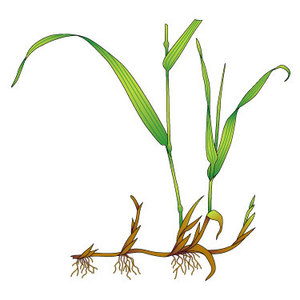 I remember clearly where I was when I first heard of glyphosate. It was on a farm in NE Essex which was hosting a development trial measuring glyphosate’s ability to control common couch. The farmer clearly considered it miraculous and indeed it has been key in increasing the productivity of agriculture around the world. Its status has been further enhanced in the EU by the banning of paraquat which was the only alternative for some of its uses.
I remember clearly where I was when I first heard of glyphosate. It was on a farm in NE Essex which was hosting a development trial measuring glyphosate’s ability to control common couch. The farmer clearly considered it miraculous and indeed it has been key in increasing the productivity of agriculture around the world. Its status has been further enhanced in the EU by the banning of paraquat which was the only alternative for some of its uses.
Glyphosate is currently going through the EU 10 yearly renewal of approval process. The submission has been made and the German registration authority, in consultation with other member state registration authorities, is working through it and I hear that there will be some form of public and expert consultation later this year, possibly in the late summer.
It is hardly worth saying that the renewal of this herbicide is critical to the future productivity of food production in the EU. It is also, perhaps, the most ‘politically charged’ renewal. This is because the ideologically motivated green lobby has mounted a huge campaign against the herbicide because of its association with Monsanto and GM. Their campaign has been done on the back of some very ‘shaky’ science (I would like to say something stronger than ‘shaky’ but that would perhaps be too emotive) and intense lobbying. Some of the papers quoted by the so-called green groups come from very widely recognised institutions but, in my opinion, the content of these papers discredits the standing of science, the authors, their ‘cause’ and their institutions.
However, some things have changed over the last ten years that I assume will have to be taken into account during the re-registration process. It is now clear that the risk of resistance to glyphosate is far higher than previously anticipated. Equally, the risk of it occurring in water is far higher than anticipated.
I never thought that glyphosate had much propensity to move to water and had assumed that the recorded levels in water courses were mainly due to applications to hard surfaces. However, recently published research in France (carried out by a very reputable organisation) suggests that glyphosate applied to a calcareous clay soil can move to water over a period of time. This is because of a chemical interaction with that particular soil. The French are now researching whether this can also occur on other soil types, particularly high pH soils. Additional evidence comes from the US Geological Survey which has measured glyphosate in water, the air and in rainfall, particularly in the high usage area of the Mississippi River Basin (http://www.usgs.gov/newsroom/article.asp?ID=2909#.VPF05XysXTA).
The UK Environment Agency estimates that the levels in water have to be around 2,000 times higher than the 0.1 ppb drinking water standard to have an impact on the health of the water environment. Such high levels have never been approached in monitoring in the UK but the drinking water standard has regularly been exceeded. Fortunately, glyphosate is easily removed from water by the activated carbon filters at the water works.
Most farmers are familiar with the development of resistance outside the EU of a range of weeds to glyphosate. The first recorded case of resistance, rye-grass (Lolium rigidum) in Australia, was not associated with GM crops but there is no doubt that growing such crops has accelerated resistance development, which has been further encouraged by these crops enabling the adoption of no-till agriculture. Decisions on resistance management are usually taken by the member states when they authorise products based on EU approved active ingredients and they see this issue as a priority area. I am sure that our regulators will take due regard of this risk and, if they consider it necessary, impose restrictions that they deem necessary but that have the minimum impact on the industry.
It is clear that resistance development and movement to water can be a reflection of the level of use of the herbicide. Hence, I am fearful that some restrictions in use may result from the EU approval and the subsequent product authorisation process in the UK. Let’s hope it is not too onerous and does not reduce the European farmers’ ability to produce food.
 I must add a brief footnote. Prior to the introduction of glyphosate, couch control was done by repeated cultivation using guidelines based on the research done by George Cussans at the Weed Research Organization. After the introduction of glyphosate he developed new areas of research, particularly, the field activity of glyphosate, black-grass control (remember Kd?) and resistance and the competitiveness of weeds. George died recently and I am sure that many would like to join me in acknowledging his research, his beautifully written papers (many of which are still very much appropriate), his communication skills and his friendship.
I must add a brief footnote. Prior to the introduction of glyphosate, couch control was done by repeated cultivation using guidelines based on the research done by George Cussans at the Weed Research Organization. After the introduction of glyphosate he developed new areas of research, particularly, the field activity of glyphosate, black-grass control (remember Kd?) and resistance and the competitiveness of weeds. George died recently and I am sure that many would like to join me in acknowledging his research, his beautifully written papers (many of which are still very much appropriate), his communication skills and his friendship.
